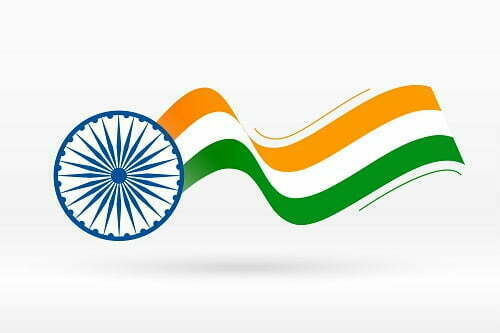Table of Contents
Rani Laxmibai | Here’s everything you need to know about this brave personality!
Subhadra Kumari Chauhan’s Hindi poem Jhansi ki Rani is the most popular work on Rani Laxmi Bai. It is a moving account of Rani Laxmibai’s life that is frequently taught in Indian classrooms. A popular verse from it is as follows:
बुंदेले हरबोलों के मुँह हमने सुनी कहानी थी, खूब लड़ी मर्दानी वह तो झाँसी वाली रानी थी।
Laxmibai, the Rani of Jhansi, was an Indian queen. She served as the Maharani consort of the Maratha princely state of Jhansi as the wife of Maharaja Gangadhar Rao from 1843 until 1853. She was a key player in the 1857 Indian Rebellion and became a symbol of opposition to the British Raj for Indian nationalists.
On the eve of Independence Day, we have tried to throw some light on one of the most popular women freedom fighters of India, Rani Laxmibai. Read on to know more about her epic life and strong personality.
Rani Laxmibai Biography
Rani Laxmibai was born in Varanasi on November 19, 1828. Manikarnika Tambe was her given name, and she was known as Manu. Moropant Tambe was her father, while her mother, Bhagirathi Sapre (Bhagirathi Bai), was from modern-day Maharashtra. Her mother died when she was four years old. Her father was the Commander of War in the Bithorr District under Peshwa Baji Rao II.
She was schooled at home, could read and write, and was more autonomous than other children her age; her studies included shooting, equestrian, and fencing, which contrasted with the cultural expectations for women in Indian culture at the time.
In 1842, she married the Maharaja of Jhansi, Gangadhar Rao, at the age of 14. She was renamed Laxmibai after her marriage. Damodar Rao, her son, was born in 1851. But he died four months later. Gangadhar Rao passed away in 1853. He had adopted his cousin’s kid Anand Rao, whom he nicknamed Damodar Rao, before his death.

Rani Laxmibai’s contributions to the Indian Freedom Struggle
Rani Laxmibai was well-known for her courage and was a key figure in the Indian Freedom Struggle against the British. This section outlines her key initiatives against the British government in order to realize her ideal of a free India.
10 points about Rani Laxmibai’s role in the 1857 revolt

- Lord Dalhousie (born April 22, 1812) attempted to seize Jhansi when the Maharaja died, using the Doctrine of Lapse because the ruler had no natural heir.
- According to this, the Rani was given an annual pension and was requested to leave the fort of Jhansi.
- The Meerut Revolt of 1857 had erupted, and the Rani was ruled over Jhansi as regent for her little son.
- In 1858, British soldiers led by Sir Hugh Rose landed at Jhansi fort with the objective of seizing it. He threatened to destroy the city if it would not yield to him.
- Rani Laxmibai declined, stating, “We strive for freedom.” According to Lord Krishna, “if we are triumphant, we will enjoy the rewards of victory; if we are beaten and murdered on the battlefield, we will undoubtedly win eternal glory and redemption.”
- The war lasted two weeks, during which the Rani led her army of men and women heroically against the British. Despite valiant battling, Jhansi was defeated.
- The Rani fled to Kalpi on horseback, attaching her baby son to her back.
- The Rani, together with Tatya Tope and other rebel forces, took Gwalior’s fort.
- She then went to Morar, Gwalior, to fight the British.
- Rani Laxmibai died on June 18, 1858, while fighting at Gwalior at the age of 23. She was in the attire of a soldier.
Key takeaways
- “Remarkable for her beauty, intellect, and tenacity, she had been the most dangerous of all the rebel commanders. The bravest and greatest of all,” said Sir Hugh Rose.
- Rani Laxmibai became a symbol of resistance to British rule for subsequent Indian nationalists.
- She will be regarded as a noble martyr who gave her life for the cause of liberty. She is a symbol of bravery, heroism, and female strength.
Was this blog informative? If so, please share your thoughts in the comments below. Click here to reach out to us for more information on the Indian Freedom Struggle. We would be happy to assist you with your queries!
Did you like this blog? Read: Civil Disobedience Movement | A movement to achieve freedom
FAQs
Q1. Where did Rani Laxmibai fight her last battle?
Answer – Laxmibai, along with her son Damodar Rao, escaped from Jhansi one night and reached Kalpi, where she joined forces with Tatya Tope. Here, they occupied the town and prepared to defend it. The British attacked Kalpi on May 22nd, 1858, and Laxmibai and Tatya Tope were defeated.
Q2. What is Rani Laxmibai famous for?
Answer – In 1858, Rani Laxmibai, also known as the Rani of Jhansi, died fighting British colonial rulers near Gwalior in a place known as Kotah-ki-Serai. She was one of the first women freedom fighters of India who revolted against the British in 1857.
Q3. Did Rani Laxmibai burn herself?
Answer – According to another tradition Rani Lakshmibai, the Queen of Jhansi, dressed as a cavalry leader, was badly wounded; not wishing the British to capture her body, she told a hermit to burn it. After her death a few local people cremated her body. The British captured the city of Gwalior after three days.






